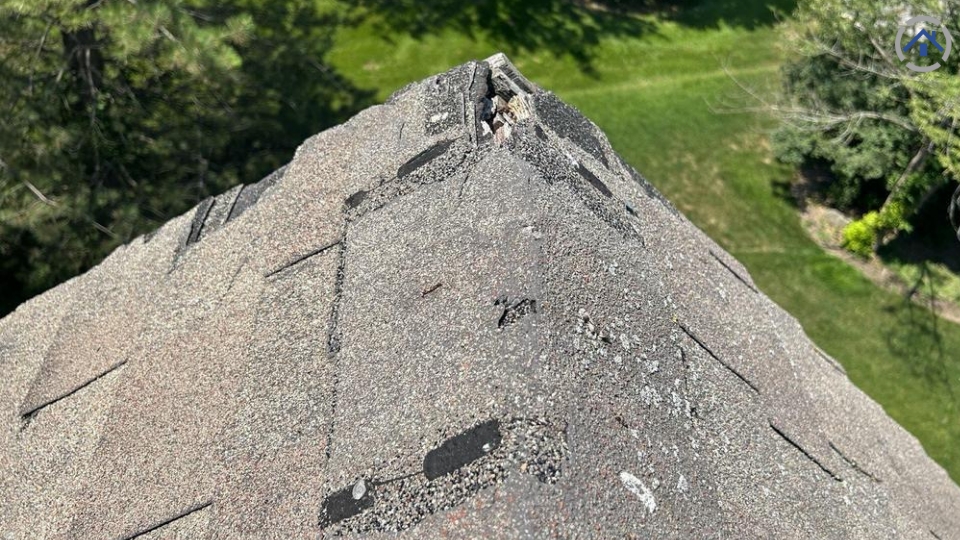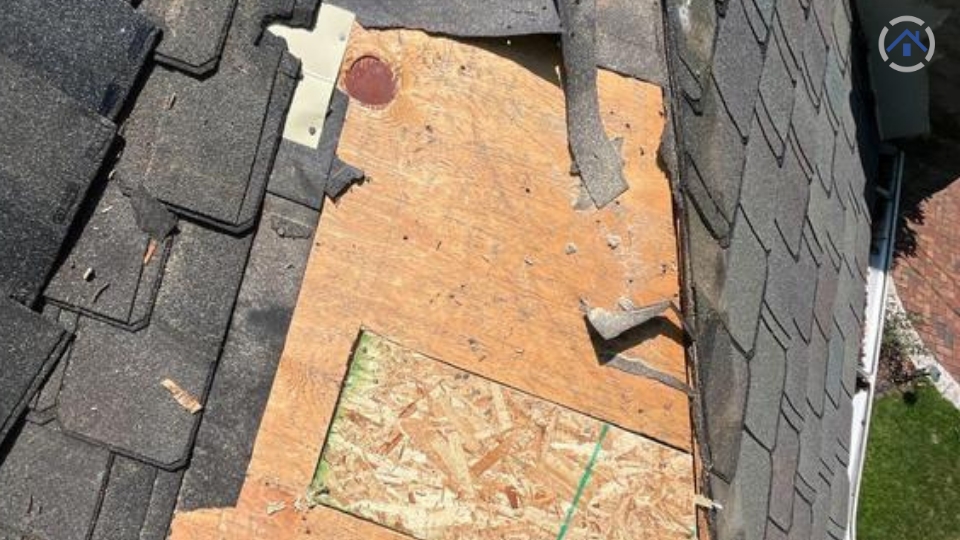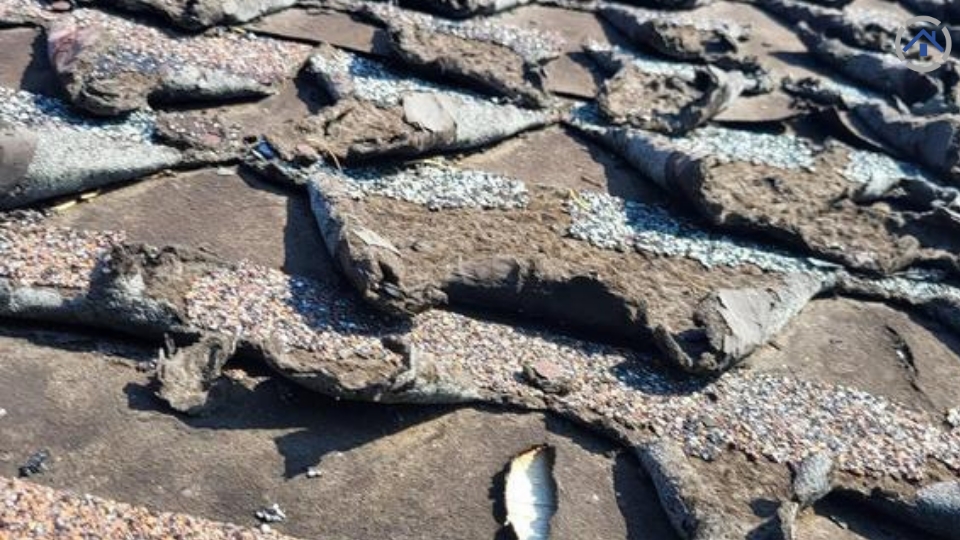
Maintaining a healthy roof is crucial for the overall integrity of your home. Regular roof inspections play a vital role in identifying potential issues before they turn into costly repairs or replacements. In this blog post, we will discuss the top 5 signs you need a roof inspection. By being proactive and addressing these signs promptly, you can protect your roof, your home, and your investment.

A well-maintained roof should have consistent coloration and should be free from stains. However, if you notice discoloration or stains on your roof, it could be an indication of potential moisture issues.
Discoloration occurs when the shingles start to dry out and lose their protective coating. This can leave them susceptible to moisture penetration, which can lead to rotting and weakening of the roof's structure. Discolored areas on the roof could also mean that moisture is trapped underneath the shingles, further compromising their integrity.
Stains on the roof can be a sign of algae growth, which can be either harmless or detrimental to the roof's health. While some algae types are relatively harmless and only affect the appearance of the roof, others can accelerate the deterioration of shingles and lead to more severe damage.
To accurately assess the cause and severity of discoloration and stains, it is essential to schedule a professional roof inspection. A roofing contractor will examine the affected areas, identify the underlying issues, and provide recommendations for appropriate action.

Granules serve as a protective layer on shingles, shielding them from the damaging effects of the sun and elements. Over time, shingles naturally lose some granules due to normal wear and tear. However, an excessive amount of granules in your gutters or coming out of downspouts could indicate a more significant problem.
Granule loss may result from shingles drying out due to age, poor-quality materials, manufacturing defects, or increased animal activity on the roof. When granules deteriorate, the underlying shingles become more vulnerable to damage, including accelerated wear and tear, potential leaks, and reduced overall performance of the roof.
A professional roof inspection is essential in such cases, as it allows a qualified roofing contractor to evaluate the extent of granule loss and identify any underlying issues. The contractor will assess the condition of the shingles, the remaining granule coverage, and the overall integrity of the roofing system.
Based on the inspection findings, the roofing professional will provide recommendations for repair or replacement. Addressing granule loss promptly can help prevent further deterioration and extend the lifespan of your roof.

Missing or damaged shingles are clear signs of roof damage that require immediate attention. While the issue itself may be obvious, there could be underlying causes that need to be identified early to prevent further damage.
Missing shingles can occur due to severe weather conditions, such as strong winds or hailstorms. Damaged shingles can result from improper installation, aging, or underlying structural problems such as under-driven nails or attic overheating. Regardless of the cause, missing or damaged shingles create vulnerabilities in your roof, allowing water to penetrate and potentially cause leaks and further damage.
During a roof inspection, a professional roofing contractor will carefully examine the condition of the shingles. They will identify any missing shingles and assess the extent of damage to determine if repair or replacement is necessary. Additionally, they will inspect the surrounding shingles to check for any signs of weakness or underlying issues that could lead to future problems.
Addressing missing or damaged shingles promptly is crucial to maintain the integrity of your roof and prevent further water damage. Ignoring these issues can result in more significant problems, such as leaks that can cause structural damage, mold growth, and costly repairs.

If you notice a sagging or wavy spot on your roof, it is a clear indication of potential structural damage. A sagging roof spot is usually a sign that moisture has penetrated the roof deck, causing it to rot and lose its strength.
There are several reasons why a roof may develop a sagging spot. It could be due to prolonged water infiltration, inadequate support in the roof structure, or excessive weight on the roof, such as from heavy snow accumulation. Regardless of the cause, a sagging roof spot should not be ignored, as it can lead to more severe structural issues and compromise the safety of your home.
A professional roof inspection is necessary to assess the extent of the sagging and identify the underlying cause. The roofing contractor will carefully examine the affected area, evaluate the condition of the roof deck and supporting structures, and provide recommendations for repairs or reinforcement.
Timely action is crucial when dealing with a sagging roof spot to prevent further damage and ensure the structural stability of your roof. Ignoring the issue can lead to more extensive repairs and potentially unsafe conditions.

Flashing is a critical component of any roofing system as it serves to waterproof vulnerable areas, such as roof transitions, valleys, chimneys, and vent pipes. However, flashings are susceptible to damage, which can compromise their effectiveness in preventing water infiltration.
Loose or damaged flashing can occur due to various factors, including high winds, improper installation, animal damage, or rusting over time. When flashings are not properly secured or have deteriorated, water can seep into the underlying areas of your roof, leading to leaks and potential water damage inside your home.
During a roof inspection, a professional roofing contractor will thoroughly examine the condition of the flashings. They will check for signs of corrosion, rusting, loose or missing pieces, and improper installation. Additionally, they will assess the integrity of the seals and ensure that the flashings are effectively protecting the vulnerable areas of your roof.
If any issues are detected, the roofing contractor will recommend repairs or replacement of the damaged flashings. Taking prompt action to address damaged flashings is essential to prevent water infiltration and protect your roof from further damage.
In conclusion, recognizing the signs that indicate the need for a roof inspection is crucial for maintaining the health and longevity of your roof. Discoloration and stains, granules in the gutters, missing or damaged shingles, sagging roof spots, and damaged flashings are all clear indicators of potential problems that require professional attention. By scheduling regular roof inspections and addressing issues promptly, you can protect your roof, prevent costly repairs, and ensure the safety and durability of your home.